Abstract
The necessary conditions for the spread of genes that determine social behaviors and the rate of spread of these genes are derived for a simple model (single locus, two alleles, random mating, discrete generations) by using the classical population genetics approach pioneered by Haldane and the linear fitness function used previously by D. S. Wilson. These results are derived for social behaviors that are manifested by individuals within families, within pairs of families, or within groups of k families, for both diploid and haplodiploid organisms. I show that, when the groups of socially interacting individuals consist of the members of more than one family, severe restrictions are placed on the evolution of altruistic and social behaviors. Specifically, in these instances, the necessary conditions for the evolution of social behaviors are more stringent and the rate of evolution is greatly reduced.
Keywords: population genetics, diploid, haplodiploid
Full text
PDF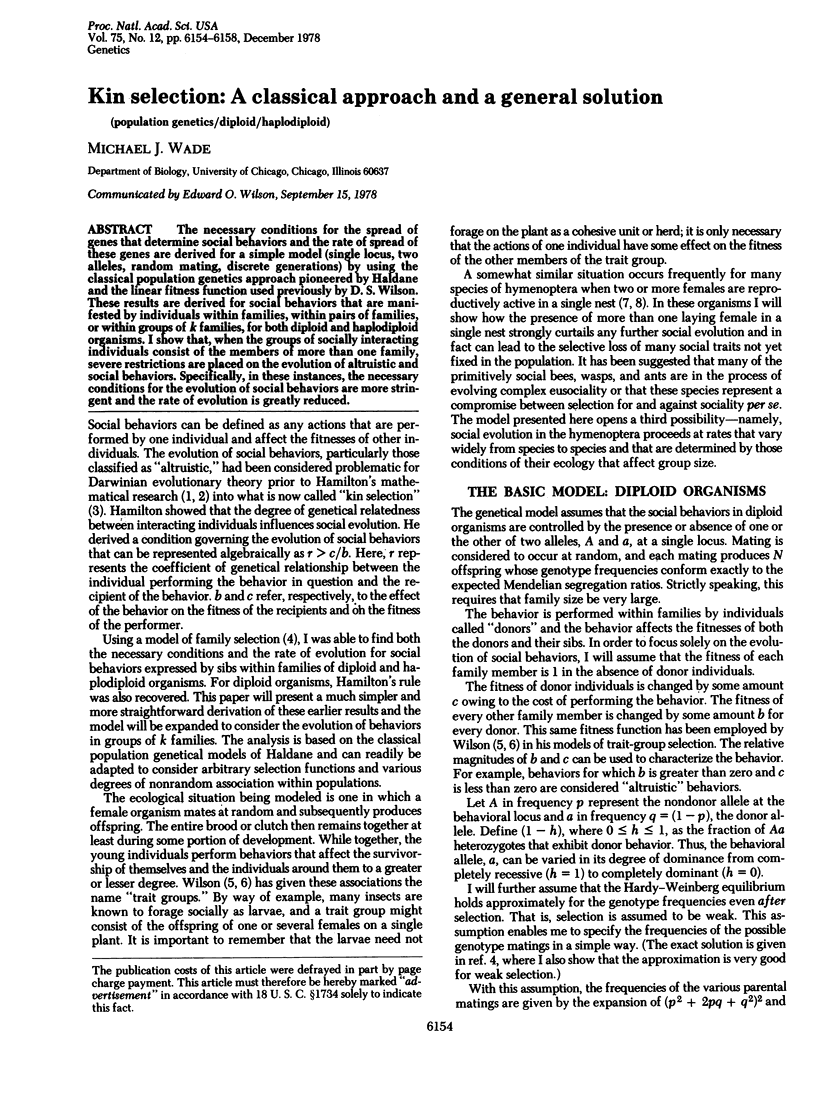
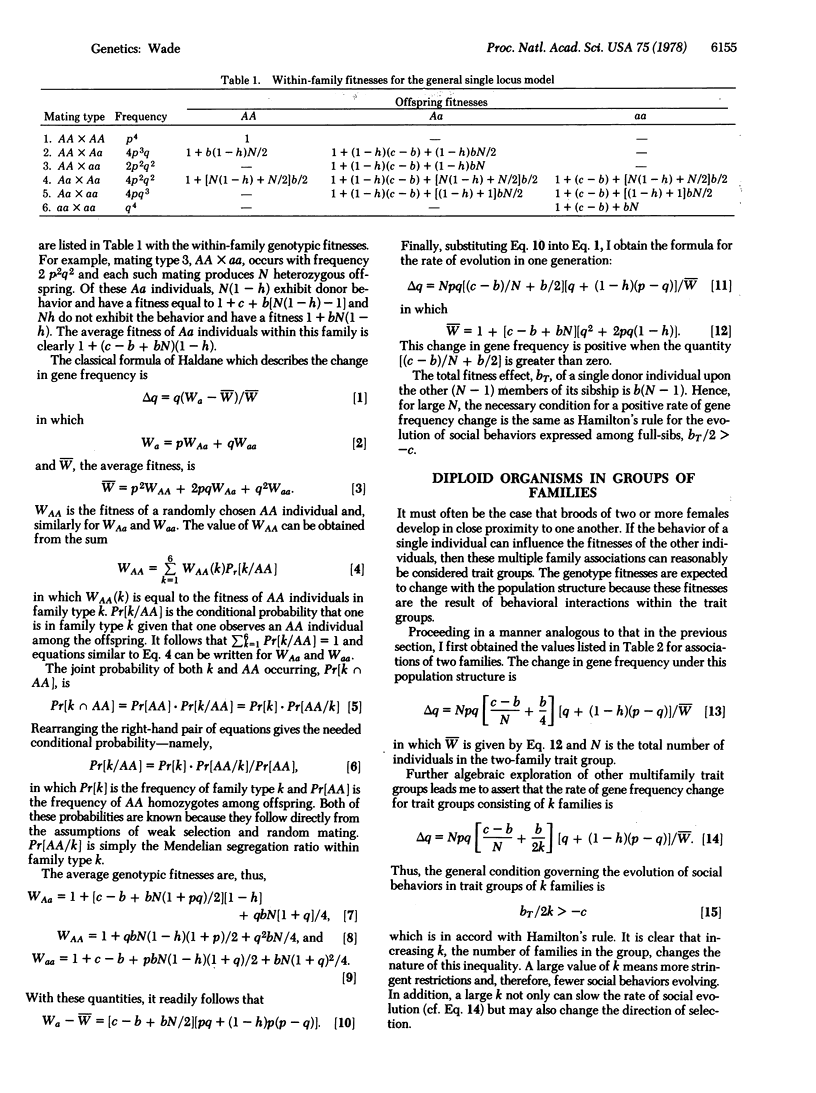
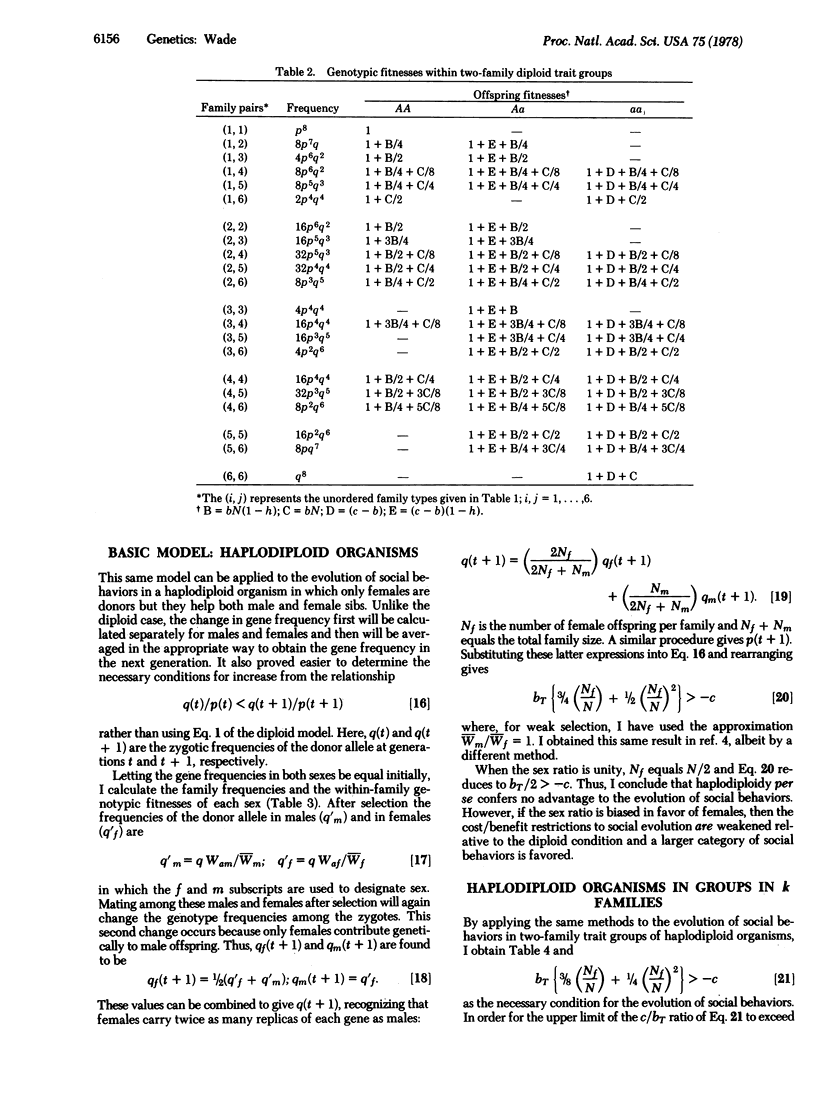
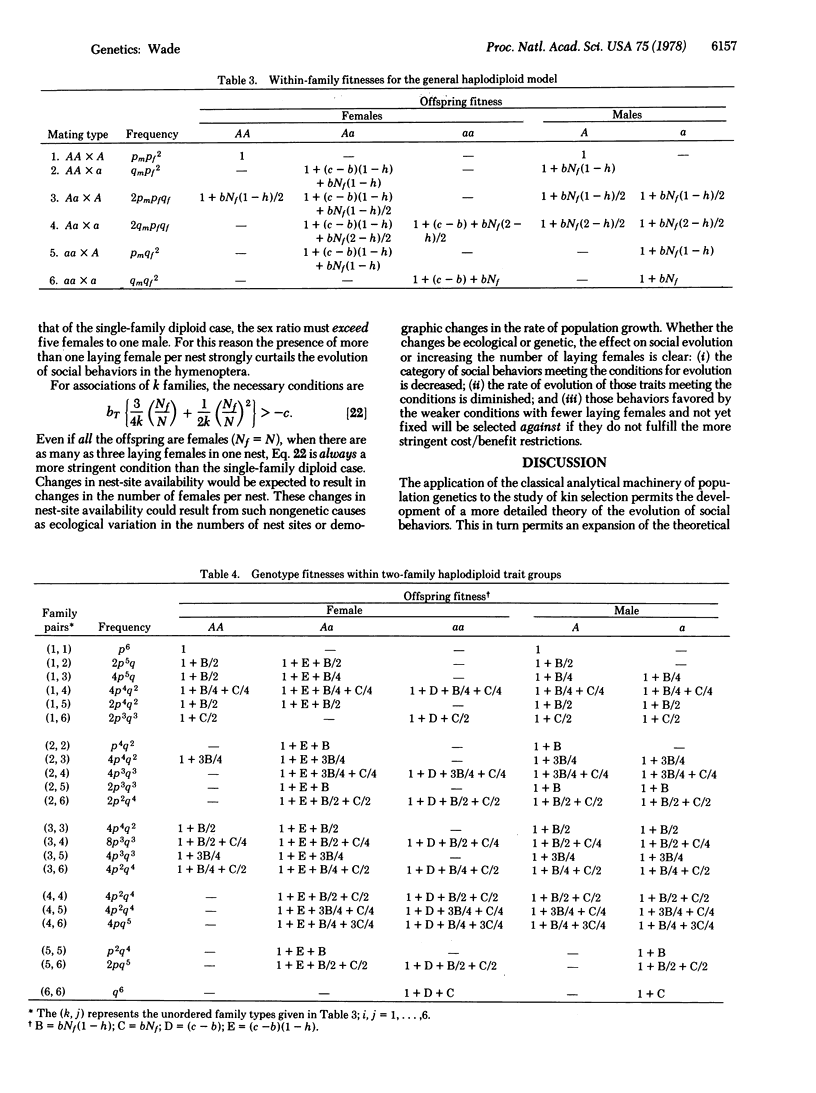
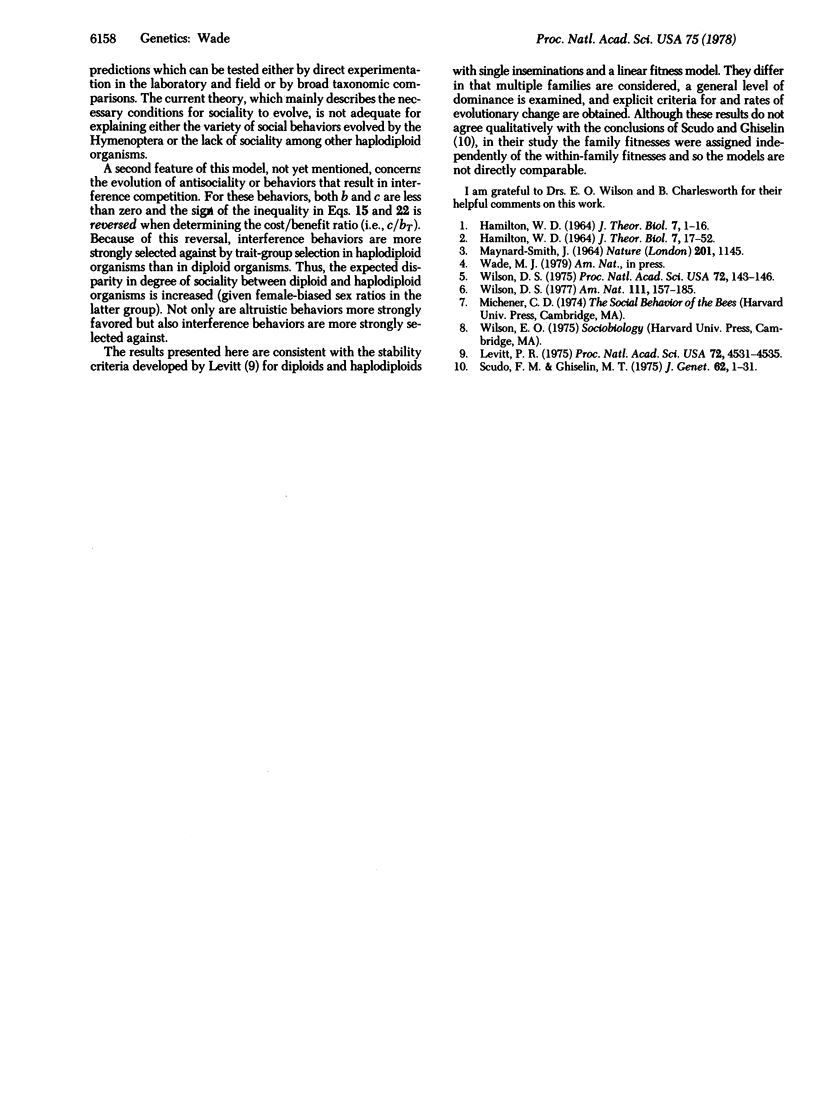
Selected References
These references are in PubMed. This may not be the complete list of references from this article.
- Hamilton W. D. The genetical evolution of social behaviour. I. J Theor Biol. 1964 Jul;7(1):1–16. doi: 10.1016/0022-5193(64)90038-4. [DOI] [PubMed] [Google Scholar]
- Hamilton W. D. The genetical evolution of social behaviour. II. J Theor Biol. 1964 Jul;7(1):17–52. doi: 10.1016/0022-5193(64)90039-6. [DOI] [PubMed] [Google Scholar]
- Levitt P. R. General kin selection models for genetic evolution of sib altruism in diploid and haplodiploid species. Proc Natl Acad Sci U S A. 1975 Nov;72(11):4531–4535. doi: 10.1073/pnas.72.11.4531. [DOI] [PMC free article] [PubMed] [Google Scholar]
- Wilson D. S. A theory of group selection. Proc Natl Acad Sci U S A. 1975 Jan;72(1):143–146. doi: 10.1073/pnas.72.1.143. [DOI] [PMC free article] [PubMed] [Google Scholar]


